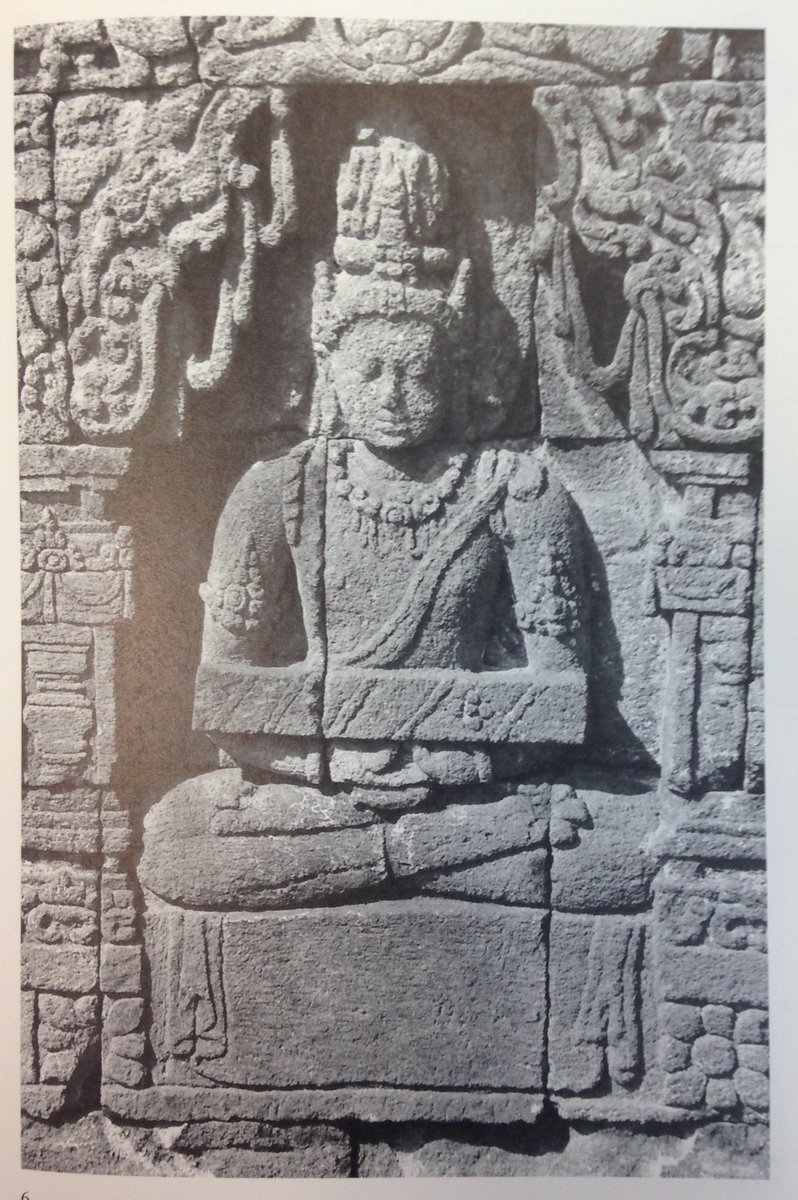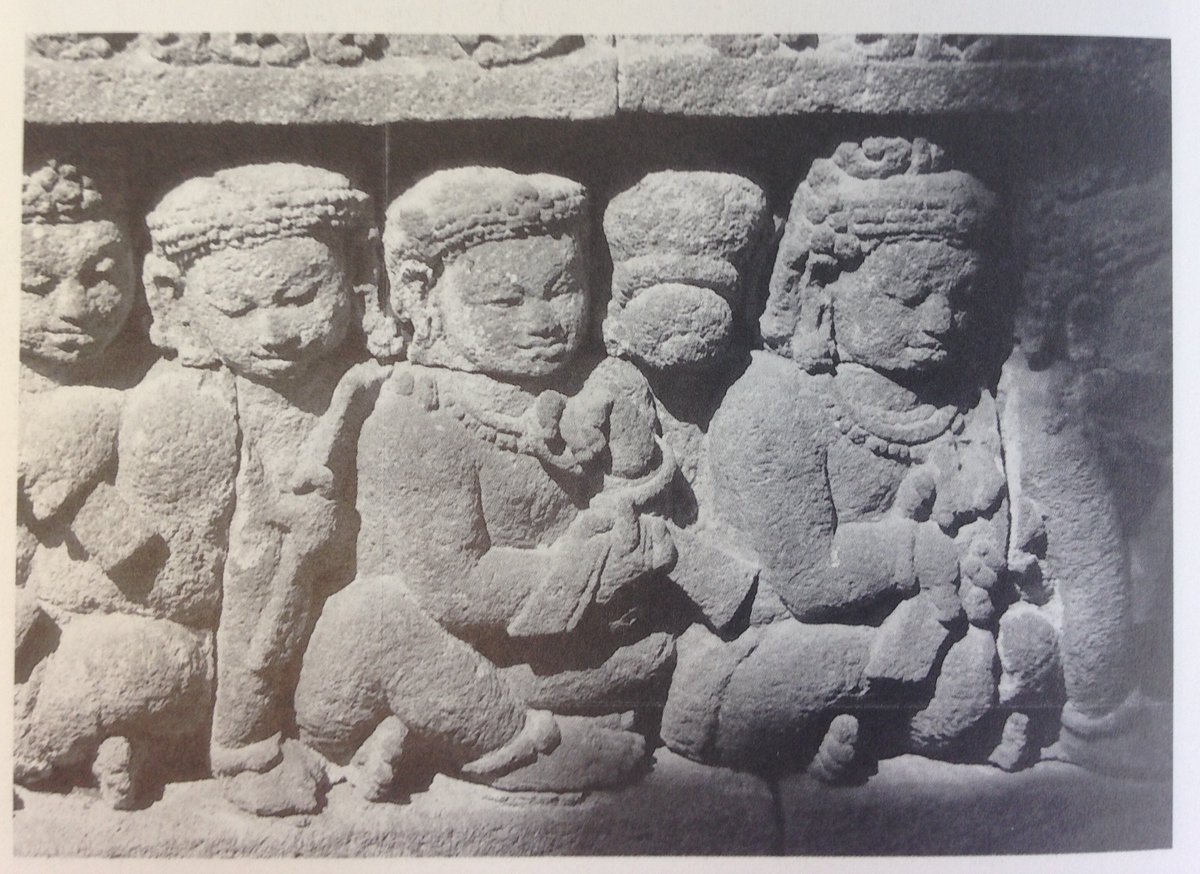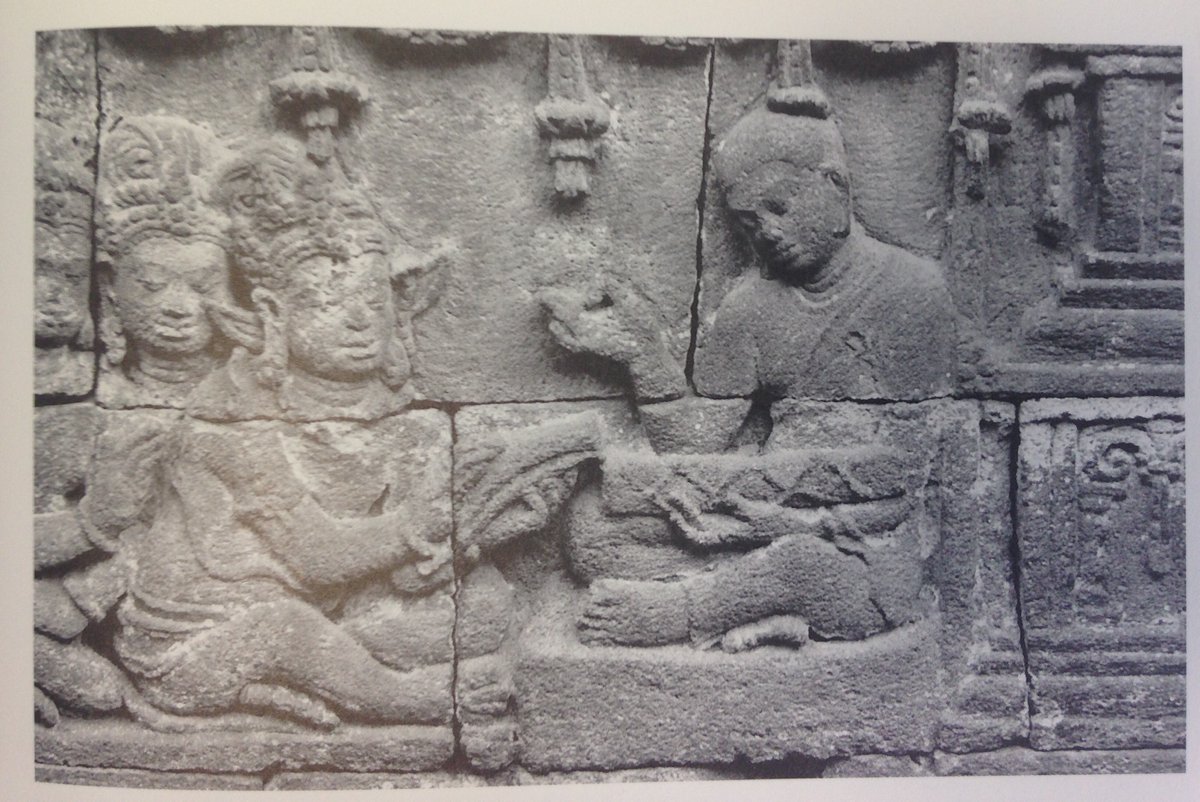Good morning, it& #39;s Jarrah ( @infiniteteeth). Today I& #39;d like to talk in more detail about practices of writing in Java and nearby societies, with a particular emphasis on its material aspects
This image of a Javanese inscription on gold foil from the Cultural Heritage Body at Prambanan, reproduced in Arlo Griffiths& #39; 2014 essay on Early Indic Inscriptions of SE Asia https://www.academia.edu/6301451/Griffiths_2014_Early_Indic_Inscriptions_of_Southeast_Asia">https://www.academia.edu/6301451/G...
My background is in literature, not material culture, but in the last few years I& #39;ve come to see how important it is to take the material basis of writing into account when we study texts
Broadly speaking, philology and literature studies tend to view texts as bits of language that are abstracted from the material objects or situations in which they actually occur. There are exceptions, of course, but I think this is generally the case
The material aspects of writing shouldn& #39;t be overstated, but in some cases, we need to take them into account when studying texts. I think the study of Javanese historical writing is such a case
I& #39;ll focus particularly on the material on which things were written, sometimes called "writing support" or "writing surface". This means paying attention to whether a text was written on stone, metal, palm leaves, paper, wood, etc.
The earliest surviving SE Asian texts, from the mid-1st millennium, are only written on non-organic materials: stone (natural or worked), clay, terracotta, metal (copper, bronze, gold). No texts on organic materials such as paper, papyrus or palm leaf survive from this time
This differs significantly from the situation in other literate parts of the world, such as China, Central Asia, northeast Africa, the Middle East, and Europe, where texts on organic materials have survived from the early centuries CE or even BCE
We have every reason to think that organic materials were used for writing in SE Asian at the same time as or earlier than the surviving texts on stone and metal. But it& #39;s very difficult to know what those organic materials were
We assume that the writing supports known in the early modern period (16th c. onwards) have been used for many centuries beforehand. Chief among these in Java are the leaves of two types of palm tree (called lontar and gebang), and paper-like sheets made of tree bark (dluwang)
But the explicit textual evidence for this is sparse, a bit contradictory, and raises questions about our assumption that we can extrapolate backwards from early modern practices
Old Javanese poetic genre of kakawin, which stretches back to the 10th c., presents a conventional image of the poet who writes on a "karas" using a "tanah". These terms are hard to interpret. "Karas" may be a stiff board, while "tanah" may be a sort of pencil, but we& #39;re not sure
In other contexts, the kakawin poems describe lovers engraving short poems on the petals of pandanus flowers ("puḍak"), and scratching them onto wooden lintels of pavilions ("lambang")
We don& #39;t know how realistic these depictions are. No surviving physical examples of "karas" or "tanah" fit exactly with how they are described in the poems. It& #39;s hard because later commentaries equate these terms with more modern technologies, but they seem to have been different
Several inscriptions from the 11th–13th c. use another term, "ripta", to refer to an organic writing support. The legal documents inscribed on stone and metal are said to also have been written on ripta, but sometimes, these ripta became rotten and their contents were lost
The meaning of "ripta" is hard to pin down. It& #39;s obviously organic, but it could refer to organic materials in general or to a specific type. It may come from an Indo-Aryan word for "being smeared", but as far as I know, "ripta" is not known in South Asia as a writing support
Temple reliefs contain a few depictions of written texts. These images from Borobudur (built circa 800) seem to show a rigid object much wider than tall, apparently crisscrossed with string (?). When individual sheets are held in the hand, they bend under gravity
It& #39;s hard to draw too much from visual representations, but as far as can be discerned, these characteristics are consistent with palm leaf, rather than with bark paper, bamboo, or other kinds of organic material
Even so, we should be cautious about assuming that palm leaf (and particularly the lontar-type of palm) was necessarily the only type of organic writing support used. The word "lontar" itself, metathesis of Javanese "ron tal" ("palm leaf") appears only from the 16th c. onwards
Descriptions of local writing practices in East Java by 15th and 16th c. visitors to the region are consistent with modern Balinese practices: incising dried lontar leaves (Borassus flabellifer) with a sharp metal knife and then rubbing ink into the grooves
These visitors included the Chinese interpreter Ma Huan (writing in 1433), who accompanied Zheng He& #39;s famous voyages to SE Asia and the Indian Ocean. In 1597, Willem Lodewijkszoon referred to the use of palm leaves for writing by their Javanese name, which he spelled "lantor"
But lontar was not the only support used. The 16th c. Old Sundanese text Śāsana Mahāguru, from West Java, mentions not only lontar palm but also gebang palm (Coryphyra utan) for writing, which was painted on with a brush or pen rather than being incised with a knife
More significantly, a central Sumatran bark-paper manuscript, containing a late Old Malay version of the Nītisarasamuccaya legal code, has been chemically-dated to the late 14th or early 15th c. This is the oldest securely dated manuscript from island SE Asia
So this shows that not only lontar palm, but also gebang palm and bark paper were used in the 15th c., and possibly earlier too. The textual evidence is so limited that we need to be careful about generalising from it. Lontar was important, but it probably isn& #39;t the whole story
Why does all this matter? Well, it& #39;s interesting in its own right, but it also has implications for the transmission of texts. We know, from explicit evidence and inferring from modern practice, that manuscripts on organic supports had short lifespans and were repeatedly copied
When you look at a medieval European manuscript, you are likely looking at a physical object that may be 500 years old or more. When you look at a "medieval" Javanese manuscript, it& #39;s almost always an 18th or 19th c. copy of a copy of a copy of a copy of a copy etc.
By default, Javanese manuscripts would perish, due to climate, insects, and other things. A significant investment of time and energy into not just storing old manuscripts, but also recopying them onto new supports, was necessary to ensure the preservation of texts
Naturally, this meant that much less material survives from very early periods. And the Javanese texts that did survive over many centuries are often highly prestigious texts and those with general appeal, such as religious texts and epic narratives
As I mentioned before, no pre-1600 archives survive in organic material form. But the survival of stone and metal records implies that archives in organic form ("ripta") must have once existed too. We see their traces in summary compilations like the 16th c. chronicle Pararaton
The perishability of organic manuscripts in SE Asia is something we have to live with. But it was also something premodern SE Asians had to live with. Crucially, it meant that SE Asian historians back then did not have lots of primary sources to draw on
When writing about, say, the origins of the Majapahit kingdom, premodern Javanese historians could not simply go and check out an original founding charter (like we can check out the Magna Carta, 800 years later). Such primary sources were likely already gone
Compared to many other Eurasian manuscript cultures, the Javanese (and more so other island SE Asian) manuscript cultures are just less copious. More was lost and what survived was more recent. This had a profound influence on how historical practice developed there
In Java specifically, there were major cultural and political disruptions in the 16th c. in particular, with the displacement of Hindu-Buddhist authority by Islamic kingdoms and big changes in language, script, and literature that we barely understand due to lack of sources
This no doubt magnified the extent of loss, and led to a situation where much pre-Islamic written culture survives in Balinese manuscripts. It& #39;s unfair to treat Bali just as a "living museum" of pre-Islamic Java (as people used to), but there& #39;s a grain of truth in the stereotype
The works of premodern Javanese historians show this lack of access to primary sources. We very rarely, if ever, see the quotation of primary sources in Javanese histories. Instead, we see the combination of secondary sources (sometimes conflicting ones) without adjudication
Accounts of the past were integrated without being assessed against primary source evidence, and often they were attributed to "what people say" rather than a specific source. Modern scholars saw this as a weakness of method, proving the Javanese didn& #39;t really care about history
I prefer to see it as a result of the conditions in which premodern Javanese historians operated. In a society where primary sources are not easily at hand, other methods must be used to preserve historical knowledge. They may vary in reliability, but they& #39;re necessary
These methods include the copying and compilation of secondary sources, but also the oral transmission of knowledge, the building of physical memorial of events, and the incorporation of history into performance repertoires. All of this is found in Western cultures too
I& #39;ll wrap up with the point that SE Asians did history as other societies did, but under different conditions. I aimed to illustrate this with reference to the materiality of writing and the perishability of organic supports in Java. Hope you found it interesting!

 Read on Twitter
Read on Twitter





